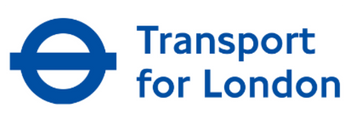MOT
The MOT test is an annual inspection required to ensure that vehicles meet safety, road worthiness, and environmental standards. To ensures that vehicles are safe for use on public roads and checks that vehicles meet emissions standards to minimize pollution. Driving without a valid MOT certificate can result in fines, and vehicles without an MOT cannot be taxed or insured for use on public roads.

The test involves a thorough examination of several key vehicle components, including:
Lighting and Signaling:
Headlights, indicators, brake lights, and reflectors.
Steering and Suspension:
Steering systems and shock absorbers.
Brakes:
Brake efficiency, pads, and discs.
Wheels and Tires:
Tire tread depth and condition.
Bodywork:
Checks for excessive corrosion or damage.
Exhaust System:
Noise levels and emissions compliance.
Fuel System:
Integrity and leaks.
Driver View:
Windscreen, wipers, and mirrors.
MOT CLASS 4
The most common MOT test, required for most passenger cars, light goods vehicles, and some vans. It’s for vehicles with a gross vehicle weight (GVW) of less than 3,000 kg and up to 8 passenger seats. This test checks items like the brakes, lights, steering, and suspension.
Vehicles Included:
-
-
- Passenger cars with up to 8 seats
- Motor caravans.
- Dual-purpose vehicles (e.g., SUVs and utility vehicles).
- Taxis and ambulances.
- Goods vehicles weighing up to 3,000 kg.
- Quads with an unladen weight up to 400 kg (550 kg for goods-carrying) and engine capacity over 50cc.
-
MOT CLASS 5
Covers private passenger vehicles with 13 or more seats, play buses, and ambulances. A specialist MOT tester is required for this test, and it’s not offered at all centers.
Vehicles Included:
- Private passenger vehicles with 13 or more passenger seats.
- Play buses (converted buses for recreational purposes).
- Vehicles not falling under the HGV (Heavy Goods Vehicle) or PSV (Public Service Vehicle) schemes but exceeding the weight or seat limits of Class 4.


MOT CLASS 7
Typically conducted on commercial goods vehicles weighing between 3,000 kg and 3,500 kg. This test is essential for larger goods vehicles, particularly those used for commercial purposes. It covers all areas tested on a Class 4 vehicle, plus entrance and exit doors, emergency exits, passenger grab handles, steps and stairs, and seat belt installation checks.
Vehicles Included:
- Goods vehicles weighing between 3,000 kg and 3,500 kg.
MOT TEST FOR PRIVATE HIRE AND TAXIS
Transport for London (TfL) requires private hire vehicles (PHVs) and
taxis to pass MOT tests to maintain their annual license:


MOT REQUIREMENT
PHVs and taxis that are more than 12 months old must pass two MOT tests each year:
The first MOT must be completed within 14 days of the licensing inspection.
The second MOT must be obtained six months after the license is granted.
MOT EXEMPTION
New taxis are exempt from the first MOT test for 12 months



